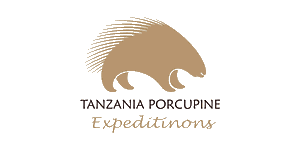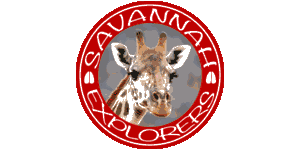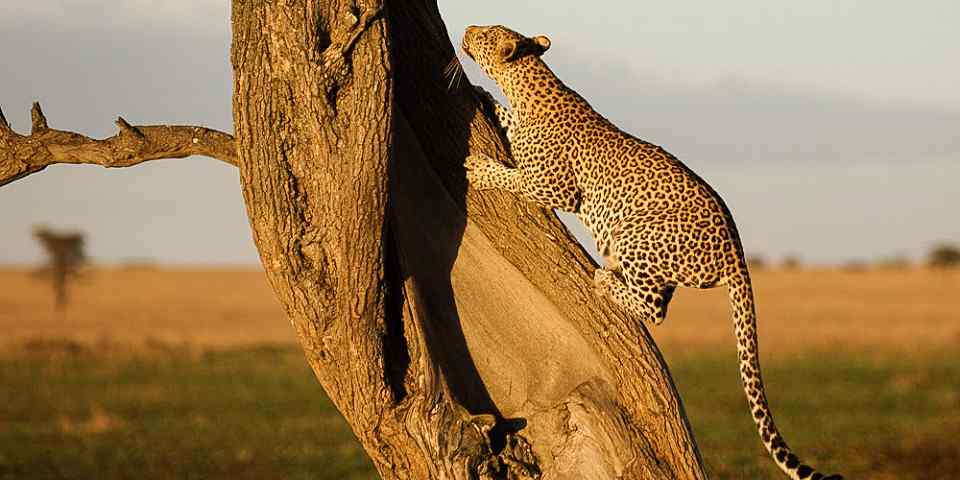Tour Length
Rates in USD $ – Change Currency
Per person, excl. international flightsOperator Rating
Other Tour Features
Filter by Operator
Filter by Accommodation
Ngorongoro Crater Safari Tours & Holidays
A Ngorongoro Crater tour is usually combined with a safari in neighboring Serengeti National Park. The Ngorongoro Conservation Area protects the volcanically formed Crater Highlands, which are dotted with deep volcanic craters. The best known, Ngorongoro is the world’s largest intact caldera and a natural wildlife reserve with few peers. Ngorongoro safari tours offer your best chance in Tanzania of spotting all the Big Five (lion, leopard, elephant, buffalo and black rhino) in one game drive. The crater is also notable for the spectacularly scenic combination of the verdant plains of the lake-studded crater floor and imposing 600m-/1,968ft-high cliffs that enclose it on all sides.
-
Top Rated Operator

11-Day Tanzania Safari with Zanzibar Beach Break
$9,199 to $12,299 pp (USD)
Tanzania: Private tour
Mid-range Lodge & Tented CampYou Visit: Arusha (Start), Tarangire NP, Lake Manyara NP, Ngorongoro Crater, Serengeti NP, Zanzibar (End)

Wayfairer Travel

4.8/5 – 185 Reviews
-
Best Seller

4-Day Classic Tour to Tarangire, Serengeti & Ngorongoro
$1,602 pp (USD)
Tanzania: Private tour
Mid-range Lodge & Tented CampYou Visit: Arusha (Start), Tarangire NP, Serengeti NP, Ngorongoro Crater, Arusha (End)

Serengeti Smile
5.0/5 – 585 Reviews
-
Best Seller

6-Day Tanzania Safari, Culture, Materuni Waterfalls Tour
$1,001 pp (USD)
Tanzania: Shared tour (max 6 people per vehicle)BudgetCamping & Hotel
You Visit: Arusha (Start), Tarangire NP, Serengeti NP, Ngorongoro Crater, Lake Manyara NP, Materuni Waterfalls (Highlight), Arusha (End)

Go Serengeti African Tours
4.9/5 – 296 Reviews
-
Top Rated Operator

9-Day Private Budget with Walking Safari & Kilimanjaro
$2,420 pp (USD)
Tanzania: Private tourBudgetCamping & Hotel
You Visit: Arusha (Start), Arusha NP, Tarangire NP, Mto wa Mbu (Town), Central Serengeti NP, Serengeti NP, Ngorongoro Highlands, Ngorongoro Crater, Mt Kilimanjaro, Arusha (End)

Serengeti Wakanda Tours and Safaris
5.0/5 – 623 Reviews
-
Top Rated Operator
![11-Day Tanzanian Safari with Zanzibar Extension]()
11-Day Tanzanian Safari with Zanzibar Extension
$4,119 to $5,240 pp (USD)
Tanzania: Private tour
Mid-range Lodge & Tented CampYou Visit: Arusha (Start), Tarangire NP, Lake Manyara NP, Serengeti NP, Ngorongoro Crater, Lake Eyasi, Zanzibar (End)

Soul of Tanzania
5.0/5 – 503 Reviews
-
![5-Day Exclusive Tanzania Safari Experience]()
5-Day Exclusive Tanzania Safari Experience
$2,000 pp (USD)
Tanzania: Private tour
Mid-range Lodge & Tented CampYou Visit: Arusha (Start), Tarangire NP, Serengeti NP, Ngorongoro Crater, Arusha (End)

Go Makini Tanzania Expedition
4.9/5 – 73 Reviews
-
![5-Day Shared Migration Northern Circuit Expedition]()
5-Day Shared Migration Northern Circuit Expedition
$1,077 pp (USD)
Tanzania: Shared tour (max 6 people per vehicle)BudgetCamping & Hotel
You Visit: Arusha (Start), Tarangire NP, Central Serengeti NP, Serengeti NP, Ngorongoro Highlands, Ngorongoro Crater, Arusha (End)

Porcupine Expeditions
5.0/5 – 74 Reviews
-
Top Rated Operator
![10-Day Best Honeymoon Luxury Safari + Zanzibar Beach]()
10-Day Best Honeymoon Luxury Safari + Zanzibar Beach
$4,554 to $5,286 pp (USD)
Tanzania: Private tourLuxuryLodge & Tented Camp
You Visit: Arusha (Start), Tarangire NP, Lake Manyara NP, Ngorongoro Crater, Serengeti NP, Zanzibar (Tanzania Beaches), Zanzibar Airport (End)

African Big Cats Safaris

5.0/5 – 483 Reviews
-
Top Rated Operator
![7-Day Best of the Wild Luxury Safari]()
7-Day Best of the Wild Luxury Safari
$3,556 pp (USD)
Tanzania: Private tourLuxuryLodge & Tented Camp
You Visit: Arusha (Start), Tarangire NP, Lake Manyara NP, Serengeti NP, Ngorongoro Crater, Arusha (End)

Kilimanjaro Adventure Safari Club
5.0/5 – 199 Reviews
-
Top Rated Operator
![10-Day Ngorongoro, Serengeti, Zanzibar & Others]()
10-Day Ngorongoro, Serengeti, Zanzibar & Others
$4,444 pp (USD)
Tanzania: Private tourLuxuryLodge & Tented Camp
You Visit: Arusha (Start), Tarangire NP, Lake Manyara NP, Ngorongoro Crater, Northern Serengeti NP, Serengeti NP, Zanzibar (End)

Savannah Explorers
5.0/5 – 646 Reviews
-
Top Rated Operator
![8-Day Tarangire, Serengeti & Ngorongoro Crater Mid Range]()
8-Day Tarangire, Serengeti & Ngorongoro Crater Mid Range
$2,695 pp (USD)
Tanzania: Private tour
Mid-range Lodge & Tented CampYou Visit: Arusha (Start), Tarangire NP, Western Serengeti NP, Serengeti NP, Ngorongoro Crater, Materuni Waterfalls (Highlight), Arusha (End)

Safari Soles
5.0/5 – 340 Reviews
-
Top Rated Operator
![5-Day Luxury Safari to Manyara, Serengeti and Ngorongoro]()
5-Day Luxury Safari to Manyara, Serengeti and Ngorongoro
$2,813 pp (USD)
Tanzania: Private tourLuxuryLodge & Hotel
You Visit: Arusha (Start), Lake Manyara NP, Serengeti NP, Ngorongoro Crater, Arusha (End)

Full Package Adventures
5.0/5 – 222 Reviews
-
![7-Day Unforgettable Luxury Wildlife Safari]()
7-Day Unforgettable Luxury Wildlife Safari
$2,800 pp (USD)
Tanzania: Private tourLuxuryLodge & Tented Camp
You Visit: Arusha (Start), Tarangire NP, Serengeti NP, Ngorongoro Crater, Lake Manyara NP, Arusha (End)

Quagga Topy Safaris and Tours
5.0/5 – 161 Reviews
-
![8-Day Tanzania Group Tour Safari]()
8-Day Tanzania Group Tour Safari
$1,639 pp (USD)
Tanzania: Shared tour (max 6 people per vehicle)BudgetCamping & Hotel
You Visit: Arusha (Start), Tarangire NP, Serengeti NP, Ngorongoro Crater, Lake Manyara NP, Mto wa Mbu (Town), Arusha NP, Materuni Waterfalls (Highlight), Arusha (End)

Good One Tours
5.0/5 – 44 Reviews
-
Top Rated Operator
![11-Day Unforgettable Wildlife Adventures & Beach Retreat]()
11-Day Unforgettable Wildlife Adventures & Beach Retreat
$2,994 to $3,104 pp (USD)
Tanzania: Private tour
Mid-range Lodge & Tented CampYou Visit: Arusha (Start), Tarangire NP, Lake Manyara NP, Central Serengeti NP, Ngorongoro Crater, Zanzibar Stone Town (Zanzibar), Zanzibar (Tanzania Beaches), Paje (Zanzibar), Zanzibar Airport (End)

Ozon Light Tours
5.0/5 – 193 Reviews
-
Top Rated Operator
![14-Day Tanzania's Grand Safari Expedition]()
14-Day Tanzania's Grand Safari Expedition
$5,315 pp (USD)
Tanzania: Private tour
Mid-range Lodge & Tented CampYou Visit: Arusha (Start), Tarangire NP, Lake Manyara NP, Mto wa Mbu (Town), Lake Natron, Karatu District, Ngorongoro Crater, Ndutu (Southern Serengeti NP), Northern Serengeti NP, Serengeti NP, Arusha (End)

Paradise & Wilderness
4.8/5 – 224 Reviews
-
![3-Day Flyin Private Camping to Serengeti & Ngorongoro]()
3-Day Flyin Private Camping to Serengeti & Ngorongoro
$1,771 pp (USD)
Tanzania: Private tourBudgetCamping
You Visit: Zanzibar (Start), Serengeti NP, Ngorongoro Crater, Zanzibar (End)

Lekobe Adventures Safaris
4.9/5 – 51 Reviews
-
Top Rated Operator
![9-Day Tanzania Northern Circuit Mid-Range Safari]()
9-Day Tanzania Northern Circuit Mid-Range Safari
$3,465 pp (USD)
Tanzania: Private tour
Mid-range Lodge & Tented CampYou Visit: Arusha (Start), Tarangire NP, Serengeti NP, Ngorongoro Crater, Lake Manyara NP, Kilimanjaro Airport (End)

Meru Slopes Tours & Safaris
5.0/5 – 464 Reviews
-
![9-Day 8 Nights Safari in Serengeti and Zanzibar]()
9-Day 8 Nights Safari in Serengeti and Zanzibar
$2,515 pp (USD)
Tanzania: Private tour
Mid-range Lodge & Tented CampYou Visit: Arusha (Start), Tarangire NP, Serengeti NP, Ngorongoro Crater, Lake Manyara NP, Zanzibar Stone Town (Zanzibar), Zanzibar Airport (End)

Serengeti Green Tanzania
5.0/5 – 115 Reviews
-
Top Rated Operator
![5-Day Mid Range Group Tour]()
5-Day Mid Range Group Tour
$1,595 pp (USD)
Tanzania: Shared tour (max 6 people per vehicle)
Mid-range Lodge & Tented Bush CampYou Visit: Arusha (Start), Tarangire NP, Lake Manyara NP, Central Serengeti NP, Ngorongoro Highlands, Ngorongoro Crater, Arusha (End)

Suricata Safaris
5.0/5 – 2,783 Reviews
8 Questions About Ngorongoro Safaris

Answered by
Philip Briggs
Philip is a renowned Africa expert and author of many Bradt guidebooks to African destinations, including the guide to Tanzania.› More about Philip
8 Questions About Ngorongoro Safaris
 Philip Briggs
Philip Briggs
When is the best time to visit Ngorongoro?
“It’s worth booking Ngorongoro safari packages for any time of year. June to October is the Dry season, which offers good visibility and wildlife viewing, but the crater is at its most beautiful in the wetter months of November to May. This period broadly coincides with the arrival of large numbers of migrant waterbirds from the northern hemisphere. Most of the crater’s more charismatic wildlife (elephants, rhinos, lions) are more or less resident. Migrant grazers, such as wildebeest and gazelle, tend to be higher in numbers in the rainy season. April and May are the low season, but it’s actually a great time for Ngorongoro holidays due to the relatively low tourist numbers. Safari prices may also drop over April to June as lodges offer discounted rates to attract more business.”
› More about Ngorongoro's best time to visit 1What opportunities are there to meet local Maasai people?
“Ngorongoro Conservation Area is not a national park but a biosphere reserve where a diversity of wildlife lives alongside the iconic Maasai. These traditional pastoralists are recognizable by their trademark toga-like red checkered shuka cloths and fondness for elaborate beadwork jewelry. You won’t need to spend long in Ngorongoro before you encounter Maasai cattle herders walking alongside the road. But if you want to interact with Maasai people, and especially to photograph them, it’s customary to visit one of several manyattas (groups of huts within an enclosure) that now welcome tourists for a fixed fee. Sadly, many visitors tend to disparage these manyattas as touristy, but this assessment is way off the mark. In most cases, the Maasai manyattas visited by tourists are long-standing pastoral settlements. Their inhabitants still live a traditional lifestyle but are very poor by any measure other than cattle ownership, and they make a large portion of their living from tourist visits.”
2Is there accommodation inside the crater?
“No. It is forbidden to overnight on the crater floor. The best base for Ngorongoro safari tours is the crater rim. Options here range from simple campsites through to mainstream Sopa and Serena lodges, a few exclusive tented camps and the legendary ‘bush baroque’ of the unique &Beyond Ngorongoro Crater Lodge. Alternatively, an ever-growing cluster of lodges and hotels can be found just outside Ngorongoro in the pretty hills around Karatu. Accommodation on the rim is typically more scenically located (the views over the crater are amazing) and better positioned for game drives, but the premier location means they tend to charge a lot more than lodges around Karatu.”
3What animals can I see as part of a Ngorongoro safari?
“In a word, lots. There are few places where you can so reliably see such large numbers of wildlife, including all the Big Five (lion, leopard, elephant, buffalo and black rhino), with a bit of luck, all year. The crater floor credibly claims to support the densest concentration of predators in Africa, with lions and spotted hyenas being particularly plentiful. Leopards are also seen regularly, but require a bit more luck. The fever-tree-covered Lerai Forest and adjoining Gorigor Swamp are the main haunt of the crater’s elephant population, which is dominated by old male tuskers. Ngorongoro is the one place in Tanzania where black rhinos are easily seen, usually in the vicinity of Lake Magadi. The open grassland that covers most of the crater floor also supports large herds of wildebeest and zebra, and smaller numbers of buffalo, Coke’s hartebeest, and Thomson’s and Grant’s gazelle. Lake Magadi normally harbors large flocks of flamingos, while other less-salty bodies of water are home to plentiful hippos.”
› More about the wildlife of the Ngorongoro Crater 4How long is the drive to the crater?
“The 150km/93mi road from Arusha to the main gate of Ngorongoro Conservation Area is surfaced in its entirety and can be covered in two hours or less. The short ascent to the crater rim and associated lodges is unsurfaced but in reasonably good condition. Allow 30 minutes to an hour from the gate, depending on the location of your lodge. The descent and ascent roads to the crater floor are short but very poorly maintained. They require a 4WD and some caution behind the wheel. Many people break up the drive from Arusha with a night or two in the vicinity of Lake Manyara National Park, which makes a great addition to Ngorongoro safari trips.”
5Does it get cold while camping on the crater rim?
“Yes. Despite the equatorial location, most of the camps and lodges on the crater rim stand at an altitude of around 2,300m/7,545ft and can be very cold at night. You’ll feel it most if you are camping or staying in a tented camp. However, most accommodation on the crater rim comprises built-up lodges and fires are lit at night to keep it warm and cozy. Still, don’t forget to pack some warm clothing.”
6How is Ngorongoro different from other parks?
“The park’s wildlife-viewing showpiece is the Ngorongoro Crater. The world’s largest intact volcanic caldera, it encompasses 260km²/100mi² of moist savannah hemmed in by sheer 600m-/1,968ft-high walls topped by a cover of dense montane forest. Even without the wildlife, the crater would rank among the world’s most stunning natural wonders. But it also doubles as a unique sanctuary within a sanctuary whose prolific wildlife and immense scenic scale regularly draws comparisons to the biblical Garden of Eden. There is nowhere else in Africa quite like it.”
7What lodges or camps do you recommend for a Ngorongoro safari?
“If your budget stretches to it, try to stay on the rim. It is better placed for game drives and offers a more immersive Ngorongoro experience than staying outside the conservation area. Of the built-up lodges, I tend to favor the Sopa as a base for Ngorongoro safaris. This is not because it is inherently better than its competitors, but because it lies very close to a combined descent and ascent road that is convenient for early morning game drives. If you prefer to sleep under canvas, Lemala Ngorongoro stands close to the same road and has a wonderful location in a stand of lichen-stained flat-topped red-thorn acacias. For unrestrained all-inclusive luxury (including excellent guided activities), &Beyond Ngorongoro Crater Lodge is hard to beat. Of the many (mostly cheaper) lodges outside the park, personal favorites include the upmarket Gibb’s Farm, the mid-range Rhotia Valley Tented Lodge, the more affordable Eileen’s Trees Inn and the few-frills but very budget-friendly Karatu Forest Tented Camp.”
8Ngorongoro Crater Safari Reviews

Stuart is a travel writer and author of numerous Lonely Planet guidebooks, including 'Kenya', 'Rwanda' and 'Tanzania'.
More than a Crater
This world renowned extinct volcanic crater covers a simply enormous 260km sq and is the largest intact volcanic caldera on the planet, but visitors don’t come here merely for the geology (although first views of this crater, from one of...

Lizzie is a reputed guidebook writer and author of the Footprint guides to South Africa, Namibia, Kenya, Tanzania, Uganda and Zimbabwe.
A Spectacular Wildlife Extravaganza in the Densely Packed Ngorongoro Crater
Ngorongoro is everything you would expect, and there’s a staggering amount of game, which is so used to the army of vehicles with camera-toting tourists poking out the top, they practically stand to attention. I’ve had some amazing...
 US
US
Sheer abundance
The sheer abundance and diversity of animals in such a beautiful setting was unbelievable. It felt like a land before time. From one spot you could see so many different species of animals, frolicking in streams and grazing on the plains...
 PT
PT
Beautiful scenery with so many animals, so many birds... And the crater itaelf is beautiful seen from the top. Since there is less vegetation, this is a park where we see lions, hienas, zebras easily, even rhinos! Just amazing!
 DE
DE
The Ngorongoro Crater felt like stepping into another world. The stunning scenery, combined with the high density of wildlife within the crater, made this stop truly special. We loved spotting rhinos, a rare sight on safari, as well as...
 NL
NL
Its an amazing place. 600m down on the crater floor it is so rich with animals its unbelievable. On 17 x 19km all animals live together and have there own system. Its magical seeing it. But because it is small that means also its easier to...




























_1813_5e20b935b89f3.gif)




